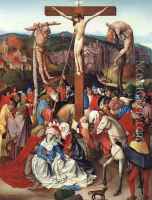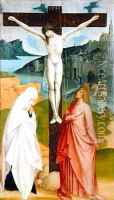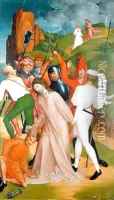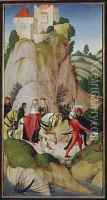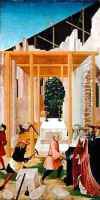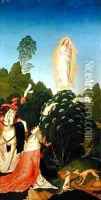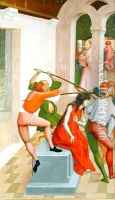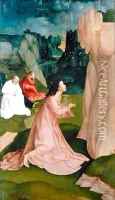Rueland the Younger Frueauf Paintings
Rueland Frueauf the Younger was an Austrian Late Gothic painter active during the transition to the Renaissance period. Born around 1470, he was the son of Rueland Frueauf the Elder, also a notable painter of his time. The younger Frueauf likely learned his craft as part of his father's workshop in Passau, which was a significant artistic center in Bavaria near the Austrian border. His style was influenced by the Danube School, which is known for its detailed landscapes and emotive figures.
Frueauf the Younger is recognized for his altarpieces and religious panels, which were characterized by their vivid colors, intricate detail, and a mix of Gothic and early Renaissance elements. His works often depicted biblical scenes and saints, designed for churches and private devotion. One of his most famous works is the altarpiece for the Parish Church in Obernberg am Inn, which he completed in the early 16th century.
Rueland Frueauf the Younger's career was marked by the stylistic changes of his time, as he managed to incorporate emerging Renaissance aesthetics into the traditional Gothic framework. This blend resulted in a body of work that resonated with contemporaries and continued to be appreciated for its historical significance. Despite his successful career, there is limited documentation about Frueauf the Younger's life. He died in 1545, leaving behind a legacy that provides valuable insight into the art of the period that straddled the Middle Ages and the Renaissance.
